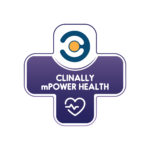Driving Healthcare Transformation: Clinical Decision Support System (CDSS) Adoption at Clinally

Introduction
In the ever-evolving landscape of healthcare, technology stands as a catalyst for transformation. As a medical Ph.D. holder and a dedicated researcher, I am excited to delve into the remarkable strides taken by Clinally in harnessing the potential of Clinical Decision Support Systems (CDSS) to elevate patient care and clinical decision-making. CDSS has emerged as a revolutionary tool that mirrors the impact of mHealth technology in NCD care, and Clinally’s journey exemplifies how strategic implementation can drive healthcare excellence.
Revolutionizing Healthcare with CDSS
The advent of Clinical Decision Support Systems has ushered in a new era of medical decision-making. These systems amalgamate intricate algorithms and real-time patient data, providing healthcare professionals with evidence-based insights that align seamlessly with the transformative influence of mHealth technology on NCD care in Tripura. Through precision and personalized approaches, CDSS empowers clinicians to make informed decisions that transcend traditional boundaries.
Strategies for Seamless Stakeholder Engagement
Lessons learned from the state-wide implementation of mHealth technology in Tripura underscore the importance of engaging stakeholders for successful technology integration. Clinally has mirrored this approach by fostering open communication and collaboration with healthcare providers, administrators, and patients. This strategy enhances the alignment of expectations and objectives, facilitating the smooth integration of CDSS into clinical workflows.
Enhancing Uptake Through Education
The parallels between CDSS adoption and the success of mHealth technology lie in the significance of education. Clinally’s dedication to comprehensive training programs empowers healthcare professionals to wield CDSS effectively, just as the education initiatives in Tripura empowered clinicians to embrace innovative approaches. This knowledge dissemination ensures that the potential of CDSS is harnessed optimally for improved patient care.
Addressing Concerns and Tailoring Solutions
Both CDSS adoption and mHealth technology integration require addressing concerns and tailoring solutions. Clinally’s approach to customization, akin to the strategies employed in Tripura, demonstrates its commitment to minimizing disruption and adapting CDSS to the unique needs of healthcare providers. By embracing concerns and providing viable solutions, Clinally fosters a receptive environment for CDSS implementation.
Optimizing CDSS Benefits for Patient Care
Just as mHealth technology prioritized patient-centered care, Clinally’s integration of CDSS centers on elevating patient outcomes. By showcasing how CDSS enhances diagnosis accuracy, individualizes treatment plans, and enables continuous patient monitoring, Clinally reinforces the potential of CDSS to revolutionize patient care, akin to mHealth’s impact on NCD care.
Study Findings and Implications
The effective delivery of a new health system intervention requires engagement at multiple levels including political leadership, health administrators, and health professionals, which can be achieved by forming a technical coordination-cum-support unit. It is important to specify the role and responsibilities of existing manpower and provide a structured training program. Enabling environment at health facilities (providing essential equipment, space and time, etc.) is also crucial. Successful implementation also requires that patients, health care providers, the health system, and leadership recognize the immediate and long-term benefits of the new intervention and have a buy-in in the intervention. With constant encouragement and nudge from administrative authorities and by using multiple strategies, 40 government health facilities adopted the mPower Heart e-CDSS. From its launch in May 2017 until November 20, 2018, a total of 100,810 eligible individuals were screened and enrolled, with 35,884 treated for hypertension, 9,698 for diabetes, and 5,527 for both hypertension and diabetes.
Conclusions: Multiple strategies, based on implementation principles, are required for successful scaling up of research-based interventions.
Summary
In the dynamic realm of healthcare, Clinally’s adoption of Clinical Decision Support Systems presents a pivotal breakthrough, echoing the strategies seen during the mHealth technology implementation in Tripura. By fostering stakeholder engagement, education, customization, and patient-centered care, Clinally paves the way for a healthcare revolution. CDSS, akin to mHealth, emerges as a catalyst for informed and transformative medical decisions, promising to reshape the landscape of patient care and drive positive outcomes for years to come.
Jindal, D., Roy, A., Ajay, V. S., Yadav, S. K., Prabhakaran, D., & Tandon, N. (2019). Strategies for Stakeholder Engagement and Uptake of New Intervention: Experience From State-Wide Implementation of mHealth Technology for NCD Care in Tripura, India. Global heart, 14(2), 165–172. https://doi.org/10.1016/j.gheart.2019.06.002


